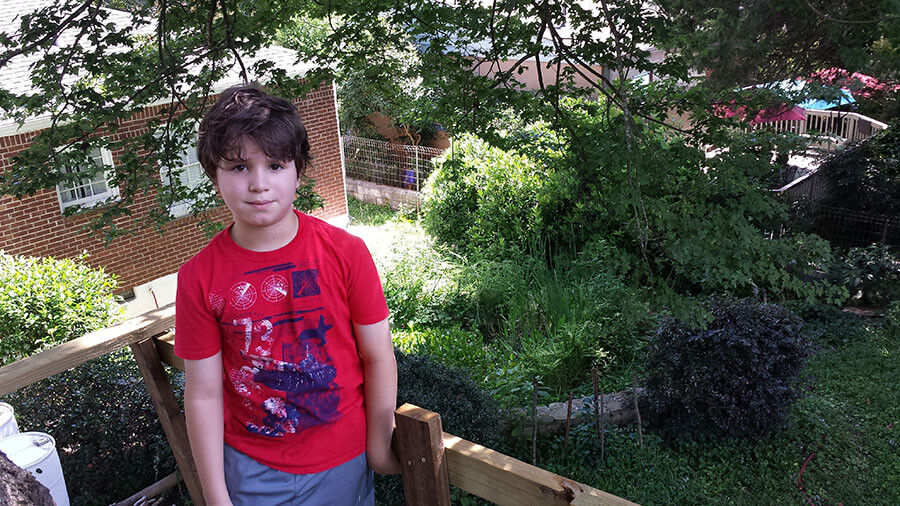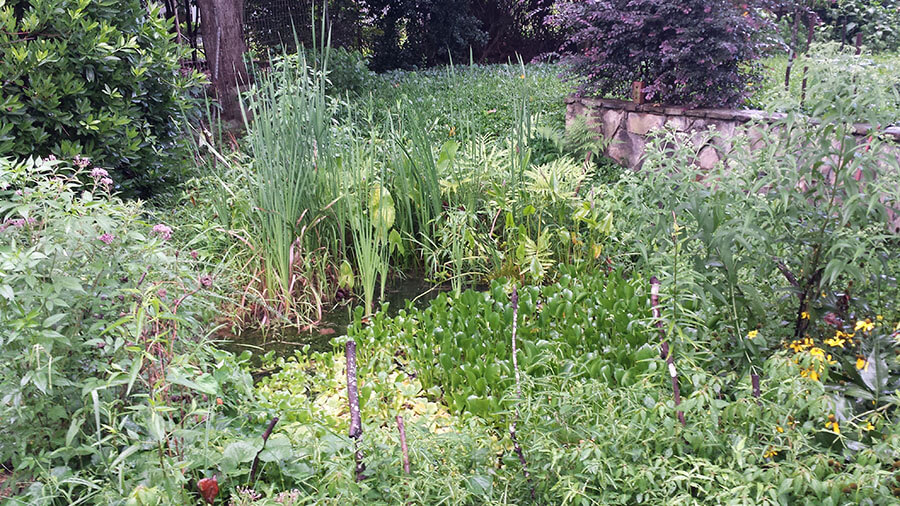The pond’s first summer was 2018, just a few months after it was dug, but the sprigs of plants we put in it grew explosively, and the frogs and insects colonized it immediately.
It was surreal how quickly the pond established itself because I didn’t use fertilizers or tend the plants or do anything that might put appearance or speed ahead of letting it happen on its own with minimal input.
But, by the time August rolled around, the pond looked and functioned like it had been in place for years. Hummingbirds and dragonflies and bees flew in and out constantly.
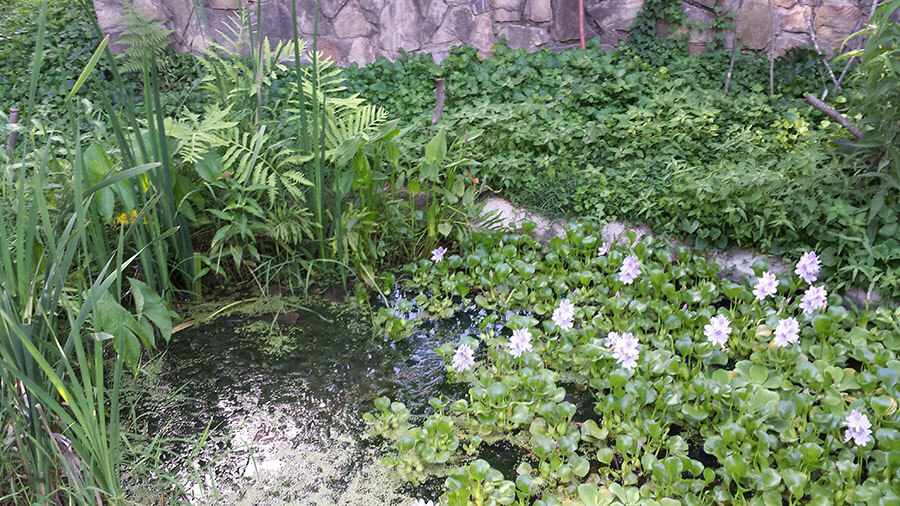
Bird Watching Blind
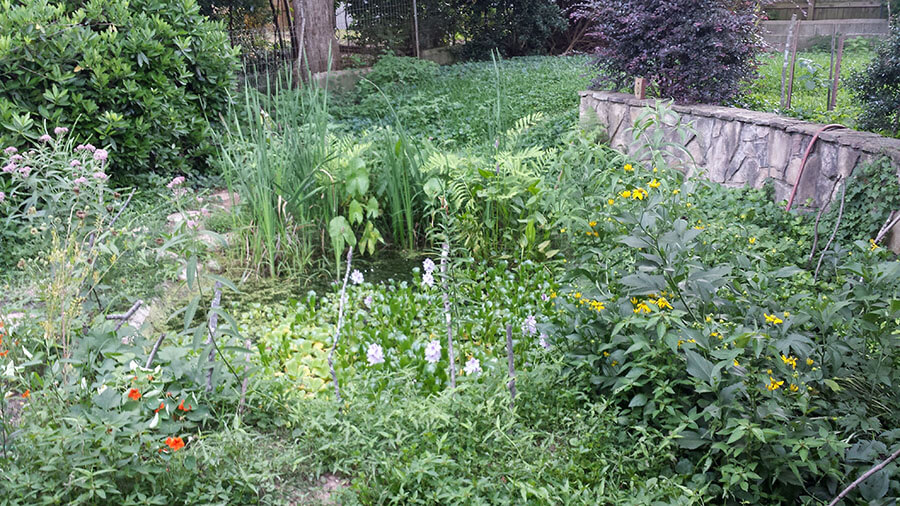
My bathroom window is now a great bird-watching blind, especially for hummingbirds and dragonflies and bees of many types. There are lots of songbirds and butterflies and the rabbits that eat the sweet potatoes I have growing around the pond mixed in with the milkweed.
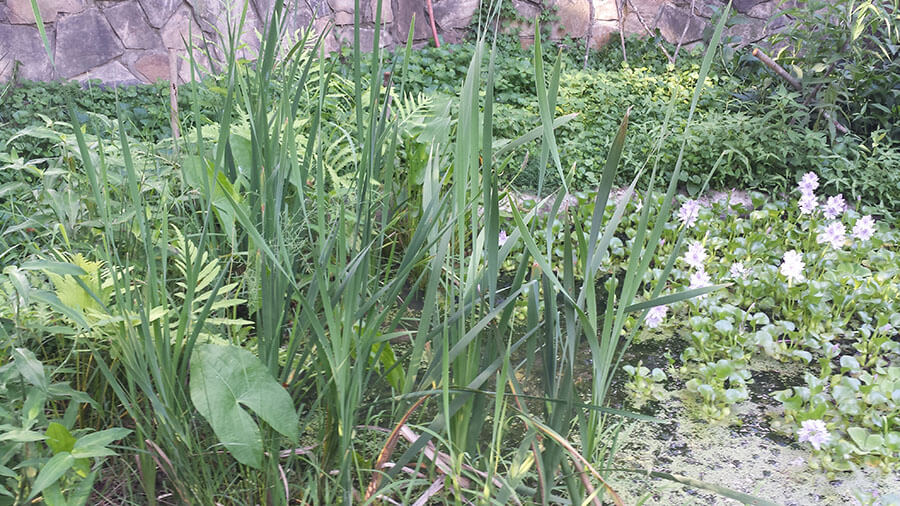
No Fertilizers
We didn’t use any fertilizer in the pond or yard, and we dug most of the plants from ditches and right-of-ways, but the vegetation was lush in about 6 weeks and got ridiculously thick after that.
The only things I did to jump start the pond were mixing in a lot of clay into the water the first time it rained and take water samples from a few local ponds.
That makes me think the bacteria of ponds must be very good at fixing nitrogen from the air, else I don’t see how all these plants could have grown so explosively when the water that ran into this concrete basin came mostly from my roof gutters.
I suspect that the thick root beards of the floating plants have nitrogen-fixing bacteria living symbiotically. The terrestrial cattails and arrow-leaf arum might be able to get what need from the bacteria in the mud, bacteria that might not be present or active in drier soil.
After seeing how fast everything in the pond grew, I began wondering if the main function of the nodules in the roots of legumes might merely be to keep the bacteria wet as if in a pond.
Then I remembered that the plants I collected in various wet right of ways also brought home wet soil with all it’s microflora, whole complex microbial ecologies in each root ball.
Also, I collected all of these plants in places that were particularly robust (places that are periodically bush-hogged but grow back lush), and so the plants would have to be fast growers or they would have been outgrown by something else.
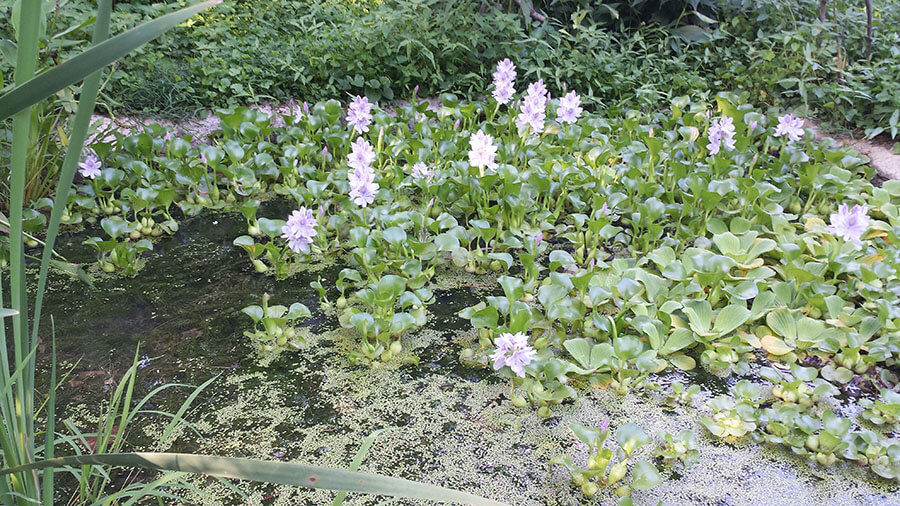
No Mosquito Larvae
The weren’t any mosquito larvae in the pond because there was no free algae in the water because the fast-growing water plants sucked all available nutrients from the water leaving it crystal clear. Water hyacinth, elodea, duckweed, and water lettuce all grow rapidly.
I was nothing less than amazed by how many pounds of carbon these plants fixed from the air in just one season. I am sure I I will have to rake the dead vegetation onto the banks every fall, possibly starting next year.
There are also the mosquito fish “minners” in the pond. These are a native guppy species I scooped from a few ponds and ditches, but the frogs ate all but three of them as of now. I am wondering how much of this lack of mosquito larvae is due to these hungry mouths and if there will be larvae when they are gone.
Three individuals is nowhere close to a sustainable population, even if all three are gravid females and the Holy Ghost fertilizes them. (There would be years when all three that survived were males, and years when none survived, and there would be the lack of genetic diversity,
I won’t re-introduce “minners” when they go because I don’t want to consume from other places, all of which are under threat by pollution, invasive species, and nearby drainage and development.
Sounds of Summer
Here is a video of the tadpoles with some sounds of later spring/early summer.
Summer vs Winter
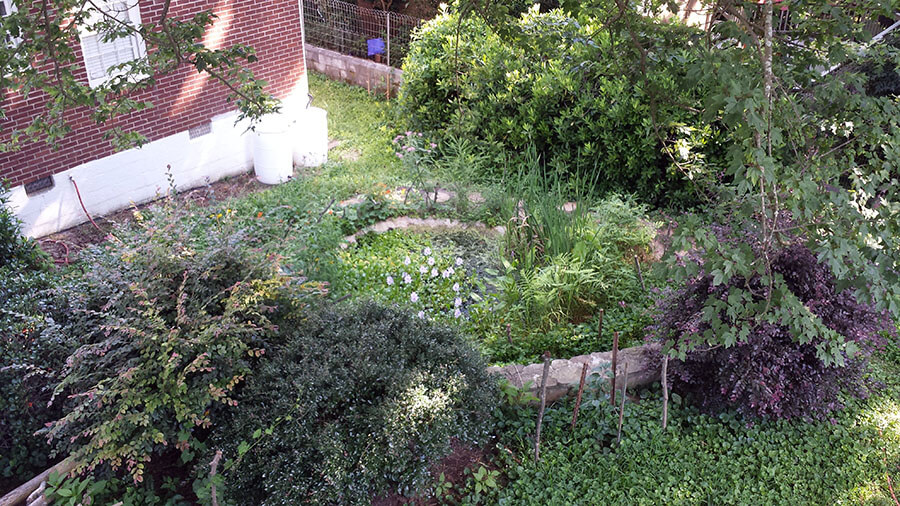
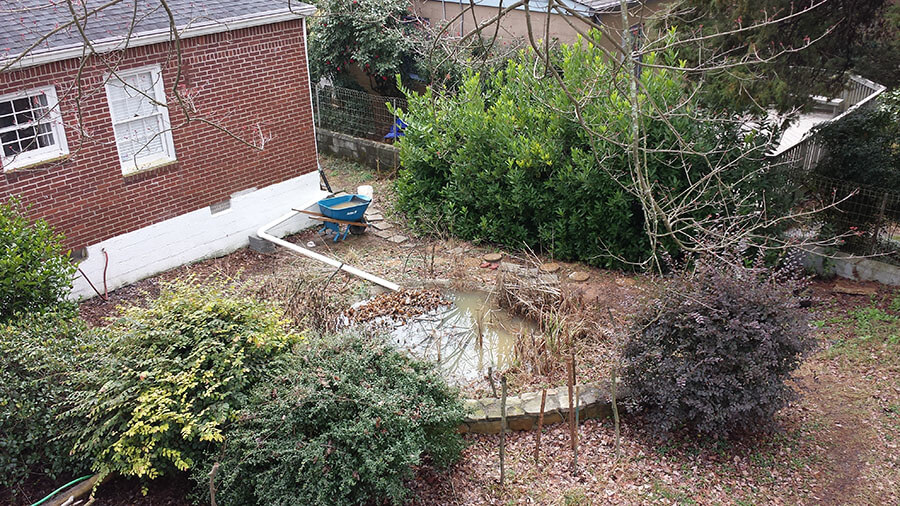
I have been planting native fruit trees like pawpaw, persimmon, and Chickasaw plum, and I thought that these would eventually replace the ornamental shrubs in my lawn. I knew that I wanted to do this slowly and remove the non-native shrubs one at a time and only after native species were established. Otherwise the disruption to birds, animals, and insects would be too much.
Seeing how thoroughly winter deflated the lush vegetation of the summer before, I certainly have more respect for these particular “useless” ornamentals and what they do for the insects and small animals that live in the backyard. I have planted native river cane at the other side of my yard to provide this sort of year-round shelter and windbreak.
